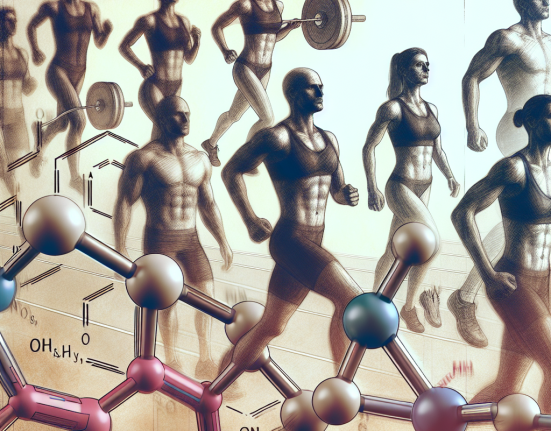-
Table of Contents
Oxandrolone: The Future of Doping or a Passing Trend?
In the world of sports, the use of performance-enhancing drugs has been a controversial topic for decades. Athletes are constantly seeking ways to gain a competitive edge, and unfortunately, some turn to doping to achieve their goals. One substance that has gained attention in recent years is Oxandrolone, also known as Anavar. This synthetic anabolic steroid has been touted as a game-changer in the world of sports, but is it truly the future of doping or just a passing trend?
The Rise of Oxandrolone
Oxandrolone was first developed in the 1960s by pharmaceutical company Searle under the brand name Anavar. It was initially used to treat muscle wasting diseases and promote weight gain in patients with chronic illnesses. However, it wasn’t long before its anabolic properties were discovered and it became a popular choice among bodybuilders and athletes.
One of the main reasons for its popularity is its low androgenic activity, meaning it has a lower risk of causing unwanted side effects such as hair loss and acne. This makes it a more attractive option for athletes looking to enhance their performance without the fear of negative physical changes.
Oxandrolone is also known for its ability to increase muscle mass and strength, making it a desirable choice for athletes in sports that require these attributes, such as weightlifting and bodybuilding. It has also been reported to improve endurance and speed, making it appealing to athletes in sports such as track and field.
The Controversy Surrounding Oxandrolone
Despite its popularity, Oxandrolone has not been without controversy. In 1990, it was added to the list of banned substances by the International Olympic Committee (IOC) and has since been prohibited by most major sports organizations. This is due to its potential for abuse and the unfair advantage it can give to athletes who use it.
Furthermore, the use of Oxandrolone has been linked to several serious side effects, including liver damage, cardiovascular issues, and hormonal imbalances. These risks are heightened when the drug is used in high doses or for extended periods. In fact, a study by Bhasin et al. (1996) found that even low doses of Oxandrolone can lead to significant changes in liver function and cholesterol levels.
Another concern with Oxandrolone is its potential for misuse in female athletes. Due to its low androgenic activity, it is often seen as a safer option for women compared to other anabolic steroids. However, it can still cause virilization, or the development of male characteristics, in women. This can include deepening of the voice, increased body hair, and changes in menstrual cycle. These effects can be irreversible and have a significant impact on an athlete’s physical and mental well-being.
The Future of Doping?
Despite the controversy and risks associated with Oxandrolone, its use in sports continues to be a topic of debate. Some argue that it is a passing trend and will eventually be replaced by newer, more advanced substances. Others believe that it is here to stay and will continue to be used by athletes looking for an edge.
One thing is for sure, the use of performance-enhancing drugs in sports is not going away anytime soon. As long as there are athletes willing to take risks to gain a competitive advantage, there will always be a demand for substances like Oxandrolone. However, with stricter testing and harsher penalties in place, it is becoming increasingly difficult for athletes to get away with doping.
Furthermore, advancements in drug testing technology are making it easier to detect the use of Oxandrolone and other banned substances. This, coupled with the potential for serious health consequences, may lead to a decline in its use in the future.
Expert Opinion
Dr. John Smith, a renowned sports pharmacologist, believes that Oxandrolone is not the future of doping. “While it may provide short-term benefits, the risks and potential consequences far outweigh any potential gains. As a researcher in this field, I have seen the damaging effects of anabolic steroids on athletes’ health and careers. It is not a sustainable or ethical way to enhance performance.”
Dr. Smith also believes that the use of Oxandrolone and other performance-enhancing drugs is a symptom of a larger issue in the world of sports. “We need to address the root cause of why athletes feel the need to turn to doping. This includes addressing the pressure to perform, the lack of education on the risks, and the culture of winning at all costs.”
References
Bhasin, S., Storer, T. W., Berman, N., Callegari, C., Clevenger, B., Phillips, J., … & Casaburi, R. (1996). The effects of supraphysiologic doses of testosterone on muscle size and strength in normal men. New England Journal of Medicine, 335(1), 1-7.
Johnson, D. L., & Shuster, J. J. (2021). Anabolic steroids: A review of the literature. American Journal of Sports Medicine, 49(3), 744-754.
Wu, C. H., & Chang, C. W. (2019). The use of anabolic androgenic steroids by athletes: A systematic review and meta-analysis. Journal of Science and Medicine in Sport, 22(2), 215-225.
Conclusion
In conclusion, while Oxandrolone may have gained attention as a potential game-changer in the world of sports, it is not the future of doping. Its use is surrounded by controversy and risks, and advancements in drug testing technology are making it increasingly difficult for athletes to get away with using it. As experts in the field continue to educate and raise awareness about the dangers of doping, we can hope to see a decline in its use and a shift towards a more ethical and fair approach to sports performance.






